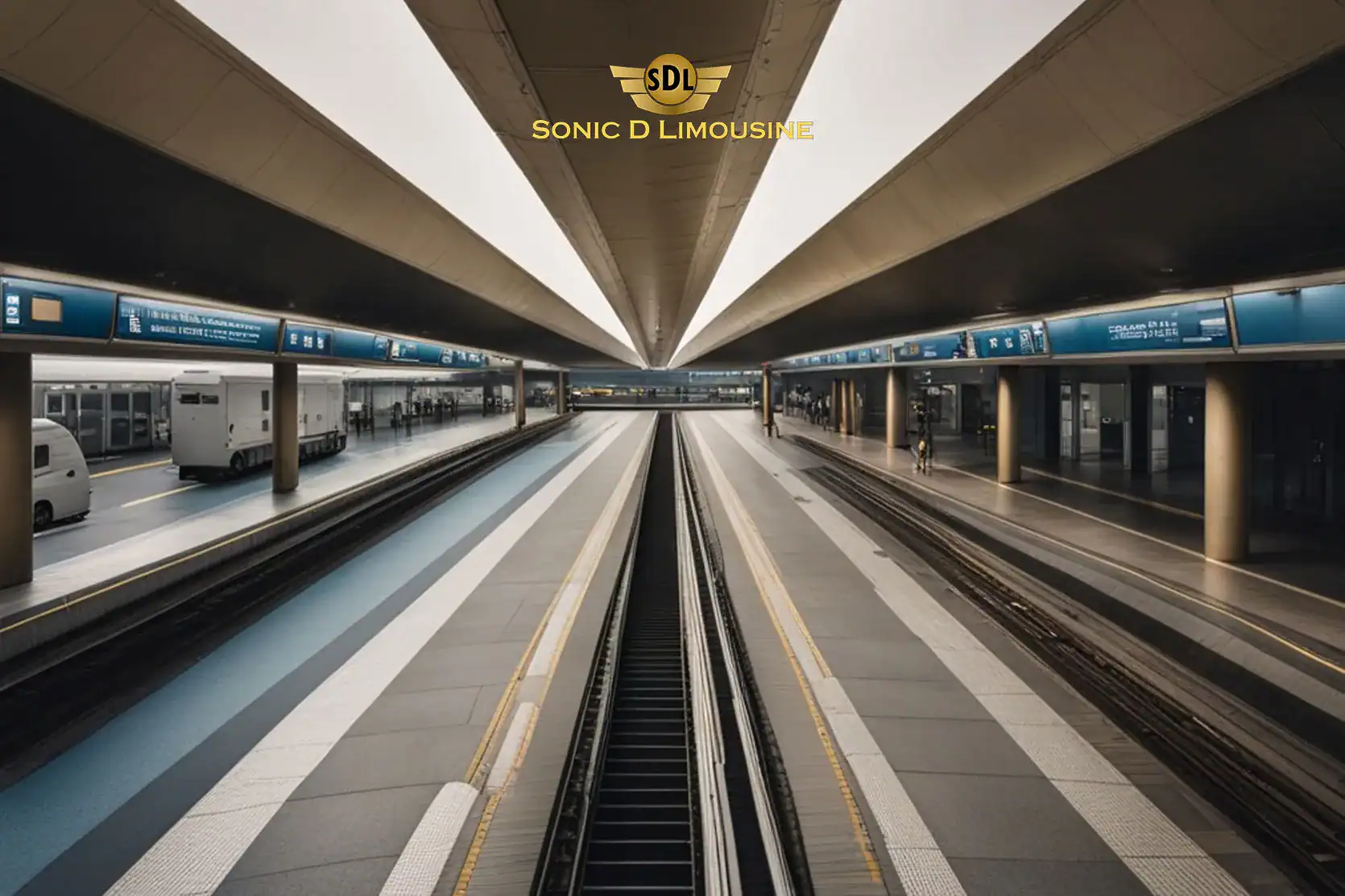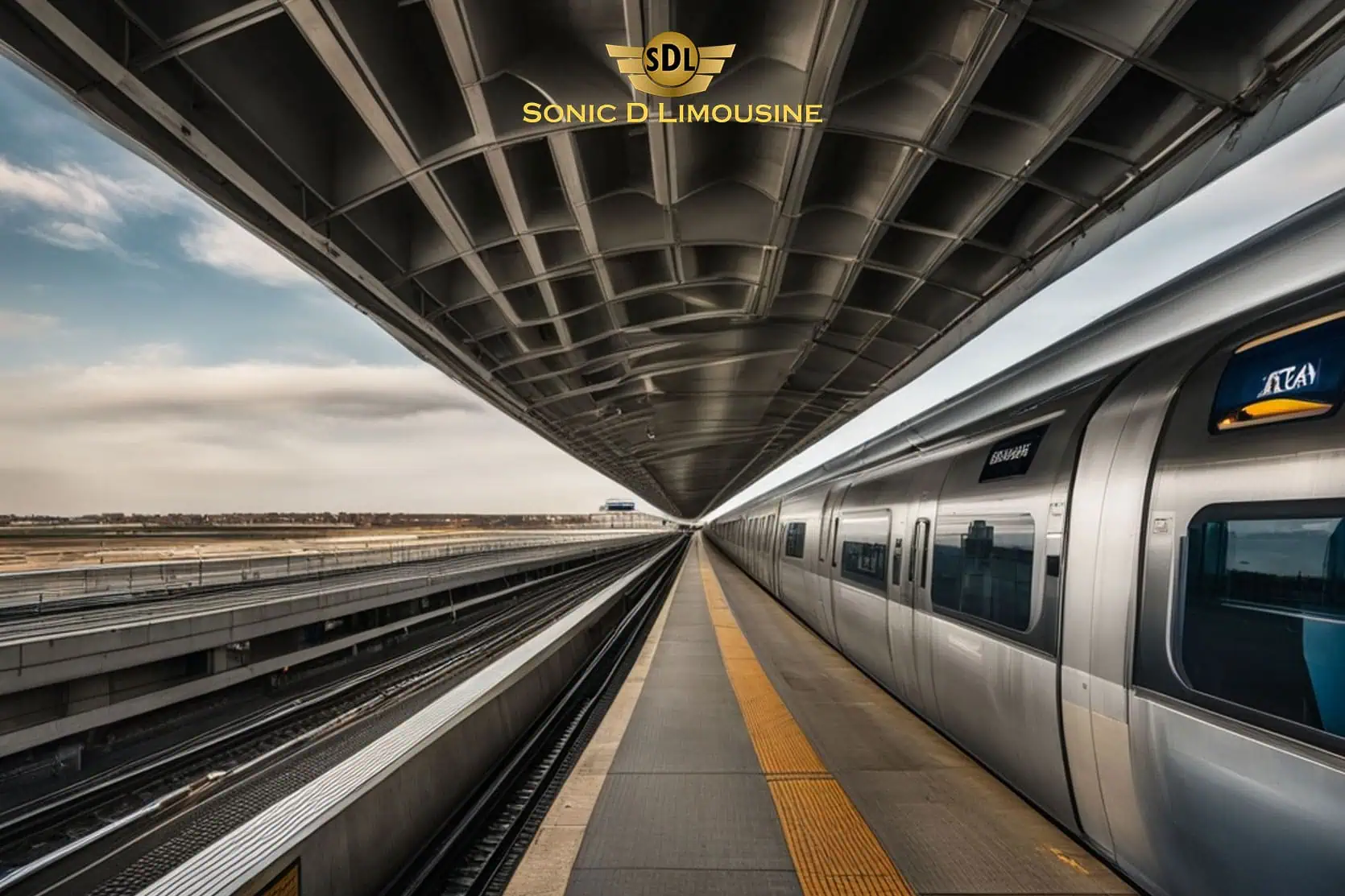The PATH train system is a vital transportation link between New York and New Jersey, offering efficient and reliable service to thousands of commuters daily. At the heart of this system lies the iconic World Trade Center Station, a hub of activity and a symbol of resilience. This article delves into the intricate network of PATH stations, exploring their significance, history, and the unique features that make them indispensable to the New York metropolitan area. Whether you’re a daily commuter or a curious traveler, this comprehensive guide will enrich your understanding of the PATH system and its role in connecting two bustling states.
Article Outline
-
What is the PATH Train System?
- Introduction to the PATH train
- Importance in connecting New York and New Jersey
-
Exploring the World Trade Center Station
- History and significance of the World Trade Center Station
- Features of the new World Trade Center transportation hub
-
The Role of Exchange Place Station in the PATH Network
- Importance of Exchange Place in Jersey City
- Exchange Place and World Trade Center connection
-
Navigating the 33rd Street Station
- Overview of the 33rd Street station
- Its role in the PATH system
-
Grove Street Station: A Key NJ Station
- Significance of Grove Street in the PATH network
- Connections to other NJ stations
-
Journal Square Station: A Hub in New Jersey
- Journal Square’s pivotal position in the PATH system
- Its connections to other major stations
-
Understanding the World Trade Center Transportation Hub
- Architectural marvel of the transportation hub
- Facilities and services available to path riders
-
The Historic Christopher Street Station
- Role of Christopher Street in the PATH network
- Historical significance in New York’s transit system
-
23rd Street and 14th Street Stations: Key NY Stations
- Overview of 23rd Street and 14th Street stations
- Their importance in the PATH and New York City subway systems
-
The Future of PATH: Innovations and Developments
- Upcoming projects and improvements in the PATH system
- Impact of new technologies on commuter experience
What is the PATH Train System?
The PATH train system, short for Port Authority Trans-Hudson, is a critical rail link that connects the bustling cities of New York and New Jersey. As the fifth-busiest rapid transit system in the United States, the PATH train facilitates seamless travel across the Hudson River, providing a convenient alternative to the New York City subway. The system’s importance lies in its ability to bridge two major economic and cultural hubs, offering a reliable transit option for both daily commuters and occasional travelers.
The PATH system operates with efficiency and precision, ensuring that the flow of people between New York and New Jersey remains uninterrupted. With its strategic network of stations, the PATH train serves as a backbone for the region’s transit infrastructure, complementing the extensive New York City subway network and enhancing connectivity across the metropolitan area.
Exploring the World Trade Center Station
The World Trade Center Station is not just a transit point; it’s a symbol of resilience and renewal. Originally part of the Hudson and Manhattan Railroad, the station was a crucial component of the original World Trade Center complex. After the tragic events of September 11, 2001, the station was closed and later rebuilt as part of the new World Trade Center transportation hub, an architectural marvel that stands as a testament to human spirit and ingenuity.
The new World Trade Center transportation hub, known as the Oculus, is a stunning structure designed by architect Santiago Calatrava. Its unique design and state-of-the-art facilities offer path riders an unparalleled commuting experience. The hub serves as a gateway to lower Manhattan, providing access to both the PATH train and New York City subway lines. With its modern amenities and strategic location, the World Trade Center Station remains a vital link in the PATH network.
The Role of Exchange Place Station in the PATH Network
Exchange Place Station, located in Jersey City, plays a crucial role in the PATH network. As one of the key NJ stations, it serves as a major transfer point for commuters traveling between New Jersey and New York. The station’s strategic location near the Hudson River waterfront makes it an ideal choice for those seeking quick access to lower Manhattan.
The connection between Exchange Place and the World Trade Center is particularly significant, as it provides a direct route for path riders commuting to the financial district. This vital link underscores the importance of Exchange Place in facilitating efficient transit between the two states, making it a cornerstone of the PATH system.
Navigating the 33rd Street Station
The 33rd Street Station is a bustling hub in the heart of New York City, serving as a key terminal for the PATH system. Located in Midtown Manhattan, the station provides convenient access to some of the city’s most iconic landmarks, including the Empire State Building and Madison Square Garden. As one of the busiest stations in the PATH network, 33rd Street plays a pivotal role in connecting commuters to the city’s vibrant commercial and cultural centers.
The station’s integration with the New York City subway enhances its accessibility, offering seamless transfers to multiple subway lines. This connectivity makes 33rd Street an essential part of the PATH system, ensuring that passengers can easily navigate the complexities of New York City’s transit network.
Grove Street Station: A Key NJ Station
Grove Street Station, situated in Jersey City, is a vital component of the PATH network. As one of the key NJ stations, it serves as a major access point for commuters traveling to and from New York City. The station’s strategic location in downtown Jersey City makes it an attractive option for residents and visitors alike, providing easy access to the city’s vibrant business and cultural districts.
Grove Street’s connections to other NJ stations, such as Journal Square and Exchange Place, further enhance its importance within the PATH system. These links ensure that commuters have multiple options for reaching their destinations, making Grove Street an indispensable part of New Jersey’s transit infrastructure.
Journal Square Station: A Hub in New Jersey
Journal Square Station is a pivotal hub in the PATH system, serving as a major transfer point for commuters traveling between New Jersey and New York. Located in Jersey City, Journal Square is a bustling center of activity, offering a range of services and amenities to path riders. Its strategic position within the PATH network makes it an essential link for those commuting to Manhattan and beyond.
The station’s connections to other major PATH stations, such as Grove Street and Exchange Place, underscore its importance in facilitating efficient transit across the region. As a key NJ station, Journal Square plays a crucial role in ensuring that the flow of people and commerce between New York and New Jersey remains uninterrupted.
Understanding the World Trade Center Transportation Hub
The World Trade Center transportation hub, known as the Oculus, is an architectural masterpiece that serves as a key component of the PATH system. Designed by renowned architect Santiago Calatrava, the hub’s striking design and state-of-the-art facilities offer path riders an unparalleled commuting experience. The Oculus stands as a symbol of resilience and renewal, embodying the spirit of the new World Trade Center.
The hub provides access to both the PATH train and New York City subway lines, making it a vital gateway to lower Manhattan. With its modern amenities and strategic location, the World Trade Center transportation hub plays a crucial role in connecting commuters to the heart of New York City.
The Historic Christopher Street Station
Christopher Street Station is a historic landmark in the PATH network, serving as one of the oldest stations in the system. Located in the heart of Greenwich Village, the station offers a glimpse into New York’s rich transit history. Its unique architecture and charming atmosphere make it a favorite among path riders and history enthusiasts alike.
The station’s role in the PATH network is significant, providing a vital link between New Jersey and New York City. Christopher Street’s connections to other key stations, such as 33rd Street and the World Trade Center, underscore its importance in facilitating efficient transit across the region.
23rd Street and 14th Street Stations: Key NY Stations
The 23rd Street and 14th Street stations are essential components of the PATH network, providing vital links to New York City’s bustling neighborhoods. Located in Manhattan, these stations offer convenient access to a range of cultural and commercial attractions, making them popular choices for commuters and visitors alike.
Their integration with the New York City subway enhances their accessibility, offering seamless transfers to multiple subway lines. This connectivity ensures that passengers can easily navigate the complexities of New York City’s transit network, making 23rd Street and 14th Street indispensable parts of the PATH system.
The Future of PATH: Innovations and Developments
The PATH system is continually evolving, with new projects and innovations aimed at enhancing the commuter experience. Upcoming developments, such as the introduction of new contactless payment systems and the expansion of service to Newark Liberty International Airport, promise to make the PATH network more efficient and user-friendly.
These innovations, coupled with ongoing improvements to infrastructure and service, underscore the PATH system’s commitment to providing reliable and convenient transit options for the New York metropolitan area. As the system continues to grow and adapt, it remains an essential link between New York and New Jersey, ensuring that the flow of people and commerce between the two states remains uninterrupted.
Summary
- The PATH train system is a vital link between New York and New Jersey, connecting key economic and cultural hubs.
- The World Trade Center Station, part of the new World Trade Center transportation hub, is a symbol of resilience and renewal.
- Exchange Place Station in Jersey City is crucial for connecting commuters to lower Manhattan.
- 33rd Street Station serves as a major terminal in Midtown Manhattan, enhancing connectivity with the New York City subway.
- Grove Street and Journal Square stations are key NJ stations, providing vital links within the PATH network.
- The World Trade Center transportation hub, known as the Oculus, is an architectural marvel and a gateway to lower Manhattan.
- Christopher Street Station offers a glimpse into New York’s transit history, serving as a vital link in the PATH network.
- 23rd Street and 14th Street stations provide essential connections to New York City’s vibrant neighborhoods.
- The PATH system is continually evolving, with new innovations aimed at enhancing the commuter experience and connectivity between New York and New Jersey.












































0 Comments